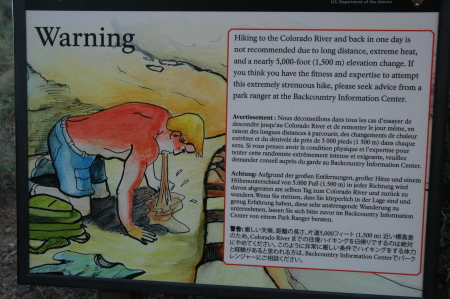Dirt roads Omaha’s solution to crumbling roads
The coming dark age: Because the substandard asphalt roads installed by private developers decades ago under an agreement with Omaha are now crumbling and the residents don’t want to pay to replace them, the city has chosen to rip out the roads and replace them with dirt roads.
For years, the arrangement held up. But as the roads began to age and crumble, and as new residents replaced the original homeowners, resentment intensified about a city government that maintained some neighborhoods while ignoring others. Said neighbor Bill Manhart, “It’s like living in the country, but in the middle of the city…There’s so much dust and mud on the street, what’s the point?”
A series of meetings between city officials and residents of the affected neighborhoods, which include about 10,000 houses, hasn’t resolved the problem. “This is insanity,” declared City Council member Chris Jerram at one heated council session earlier this year. Austin Rowser, Omaha streets superintendent, said the city’s position is “a matter of fairness. Some property owners paid for better streets and a minority didn’t.” He added that the city simply can’t afford the roughly $300 million bill to fix all the substandard streets.
That doesn’t fly with residents who say that dirt roads or crumbling pavement are unworthy of a well-off community with a growing population, a tiny unemployment rate and four Fortune 500 companies.
The blame here falls on everyone. Taxes and government revenue today are much higher than in the past when most of the city’s roads were built. Yet, the city doesn’t have the cash to do this fundamental work, because that money is devoted social programs or union salaries that no one wants to cut. Meanwhile, the well-to-do residents who live in these areas got cheaper roads back when, under an agreement that said they’d pay for maintenance. They don’t want to, however. Instead, they’ve been willing to let the roads crumble, and now prefer to have the rest of the city’s taxpayers pick up the tab.
The result: A crumbling social order illustrated by a city that is replacing paved roads with dirt ones.
The coming dark age: Because the substandard asphalt roads installed by private developers decades ago under an agreement with Omaha are now crumbling and the residents don’t want to pay to replace them, the city has chosen to rip out the roads and replace them with dirt roads.
For years, the arrangement held up. But as the roads began to age and crumble, and as new residents replaced the original homeowners, resentment intensified about a city government that maintained some neighborhoods while ignoring others. Said neighbor Bill Manhart, “It’s like living in the country, but in the middle of the city…There’s so much dust and mud on the street, what’s the point?”
A series of meetings between city officials and residents of the affected neighborhoods, which include about 10,000 houses, hasn’t resolved the problem. “This is insanity,” declared City Council member Chris Jerram at one heated council session earlier this year. Austin Rowser, Omaha streets superintendent, said the city’s position is “a matter of fairness. Some property owners paid for better streets and a minority didn’t.” He added that the city simply can’t afford the roughly $300 million bill to fix all the substandard streets.
That doesn’t fly with residents who say that dirt roads or crumbling pavement are unworthy of a well-off community with a growing population, a tiny unemployment rate and four Fortune 500 companies.
The blame here falls on everyone. Taxes and government revenue today are much higher than in the past when most of the city’s roads were built. Yet, the city doesn’t have the cash to do this fundamental work, because that money is devoted social programs or union salaries that no one wants to cut. Meanwhile, the well-to-do residents who live in these areas got cheaper roads back when, under an agreement that said they’d pay for maintenance. They don’t want to, however. Instead, they’ve been willing to let the roads crumble, and now prefer to have the rest of the city’s taxpayers pick up the tab.
The result: A crumbling social order illustrated by a city that is replacing paved roads with dirt ones.






